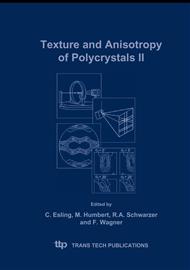p.297
p.303
p.309
p.315
p.321
p.327
p.333
p.339
p.345
Local and Global Effects in Texture and Microstructure Observed after Channel-Die Compression of Copper Single Crystals and after Cross-Rolling of Copper Sheets
Abstract:
The change of the deformation path leads to destabilization of the substructure and affects the texture of the deformed metal. The observed changes of texture and microstructure are, as a rule, significant and their characteristics depend on the geometry of the deformation process. Previous investigations on copper (and copper alloy) samples after deformation by rolling and channel-die compression were based on X-ray pole figure measurements and on observations in the light microscope. Hereby only global texture and structural characteristics have been obtained. The present study is mainly based on measurements of individual crystal orientations performed by ACOM (Automated Crystal Orientation Measurement, “Automated EBSD”) in the SEM which enables a precise local analysis of the investigated phenomena. For the channel-die experiments, (1 1 2)[1 1 -1] and (1 1 2)[1 -1 0] oriented copper single crystals have been used. After pre-deformation, a second deformation step has been carried out in transverse direction. The {1 1 2}<1 1 0> orientations are destabilized by channel-die compression, and clusters of layers develop which are composed of complementary {1 1 0}<1 1 2> components. The deformation process in polycrystalline sheets after rotating the rolling direction leads again to a distinct disintegration of the microstructure and destabilization of the b fiber. This process of microstructure reorganization after pre-deformation is fast and of high dynamics.
Info:
Periodical:
Pages:
321-326
Citation:
Online since:
July 2005
Authors:
Price:
Сopyright:
© 2005 Trans Tech Publications Ltd. All Rights Reserved
Share:
Citation:


